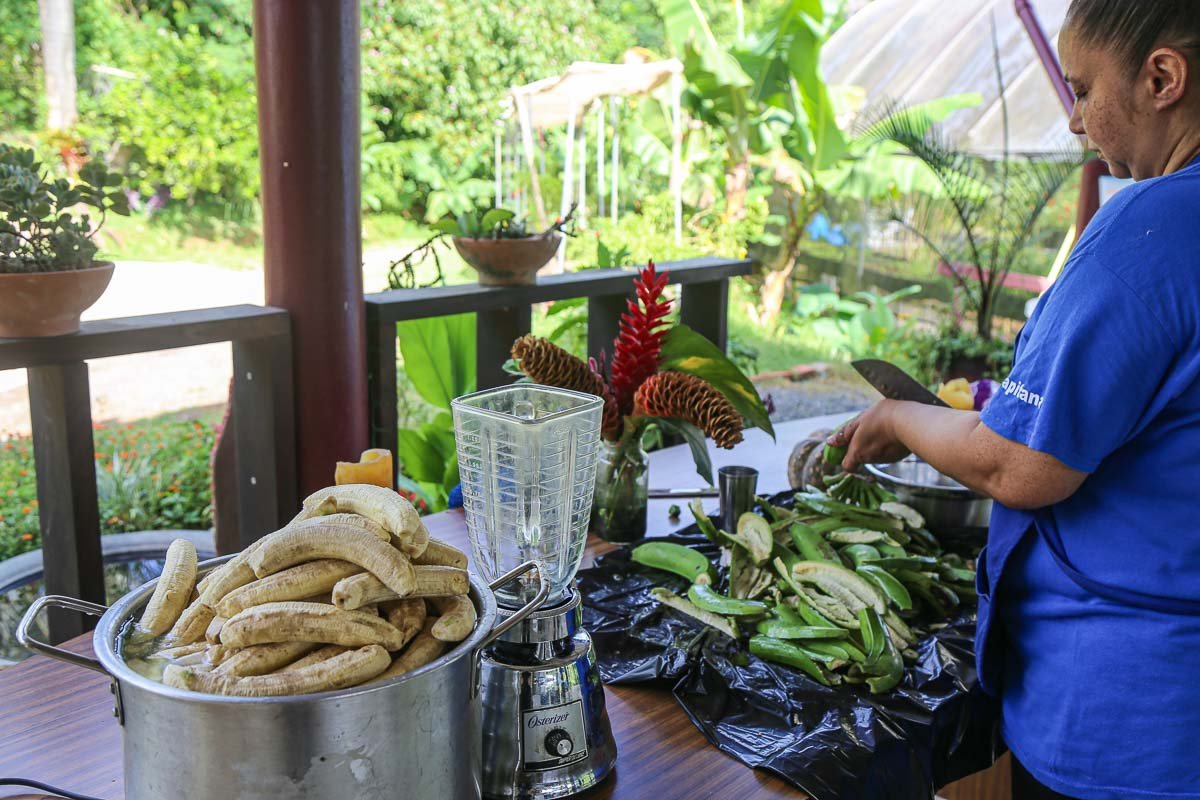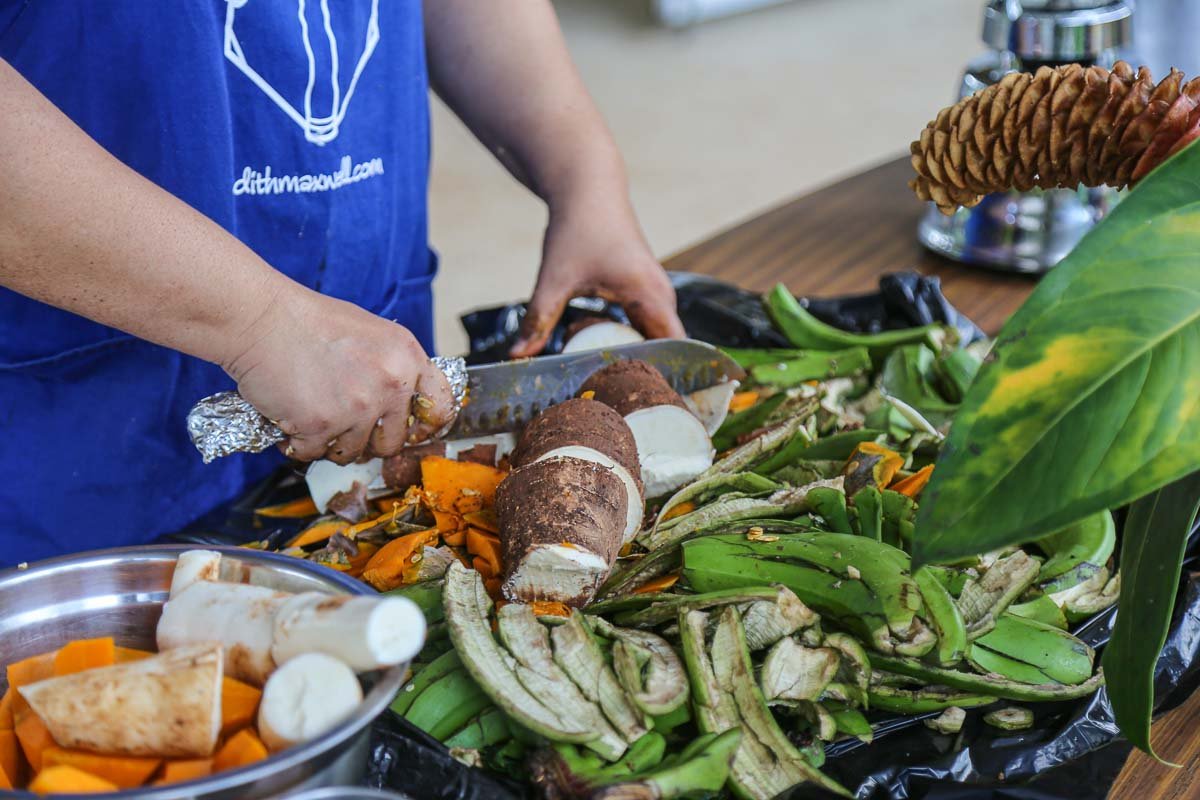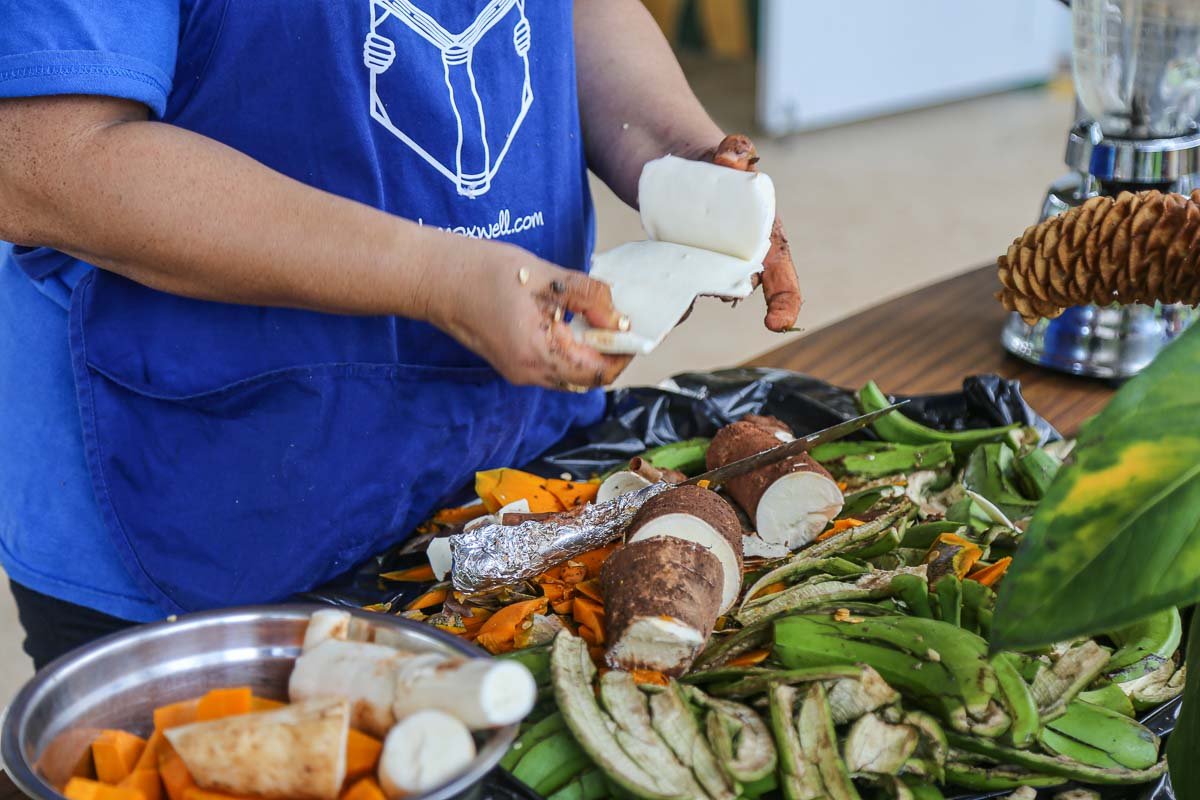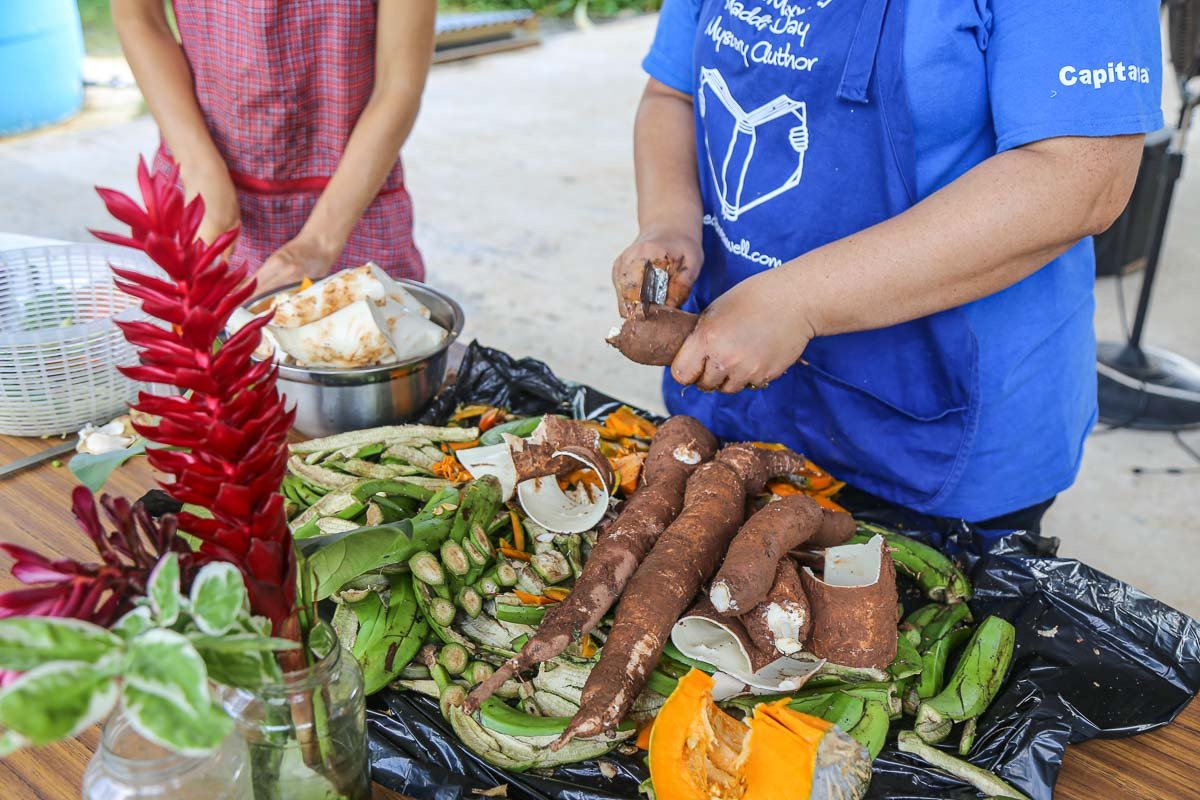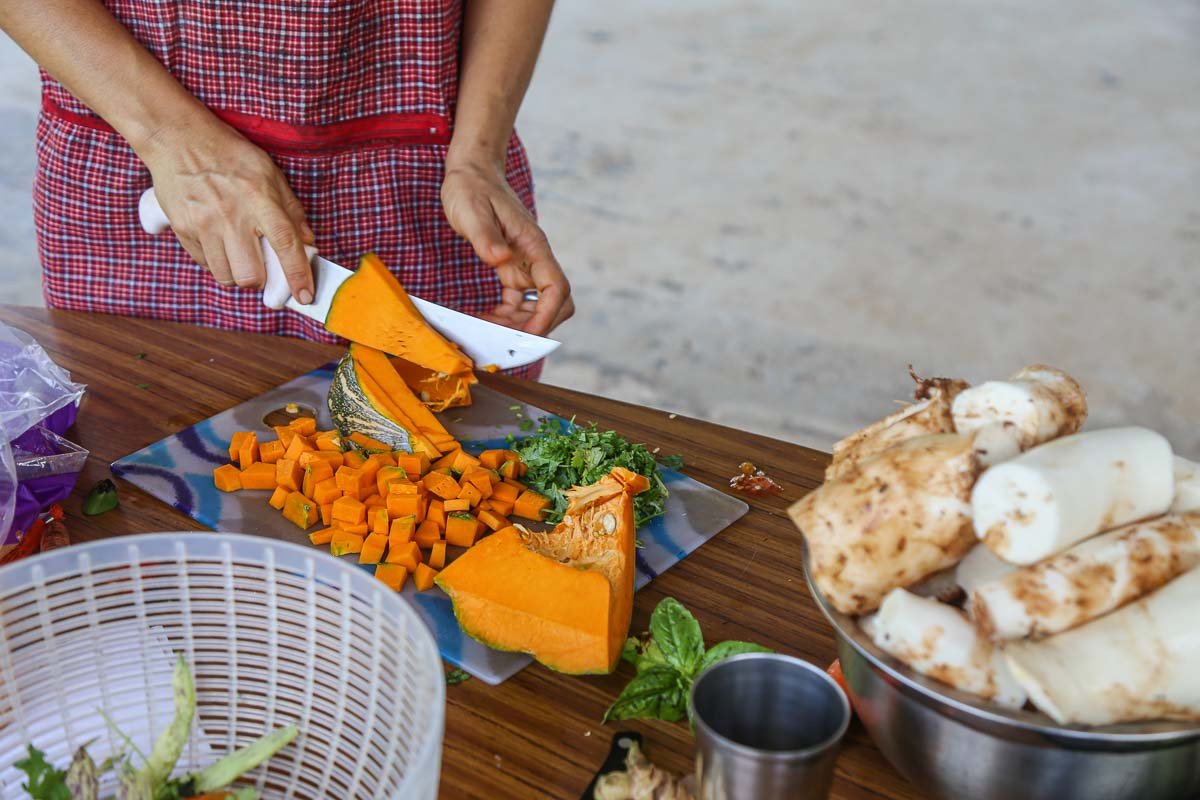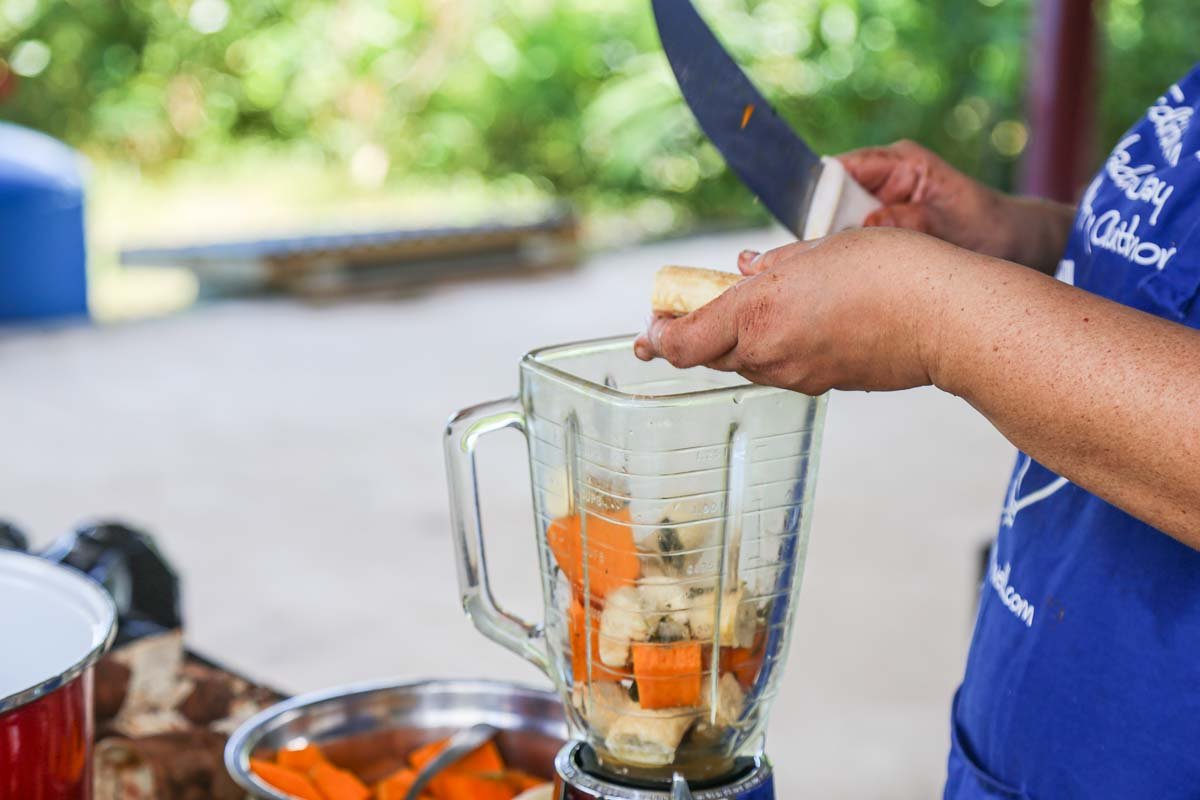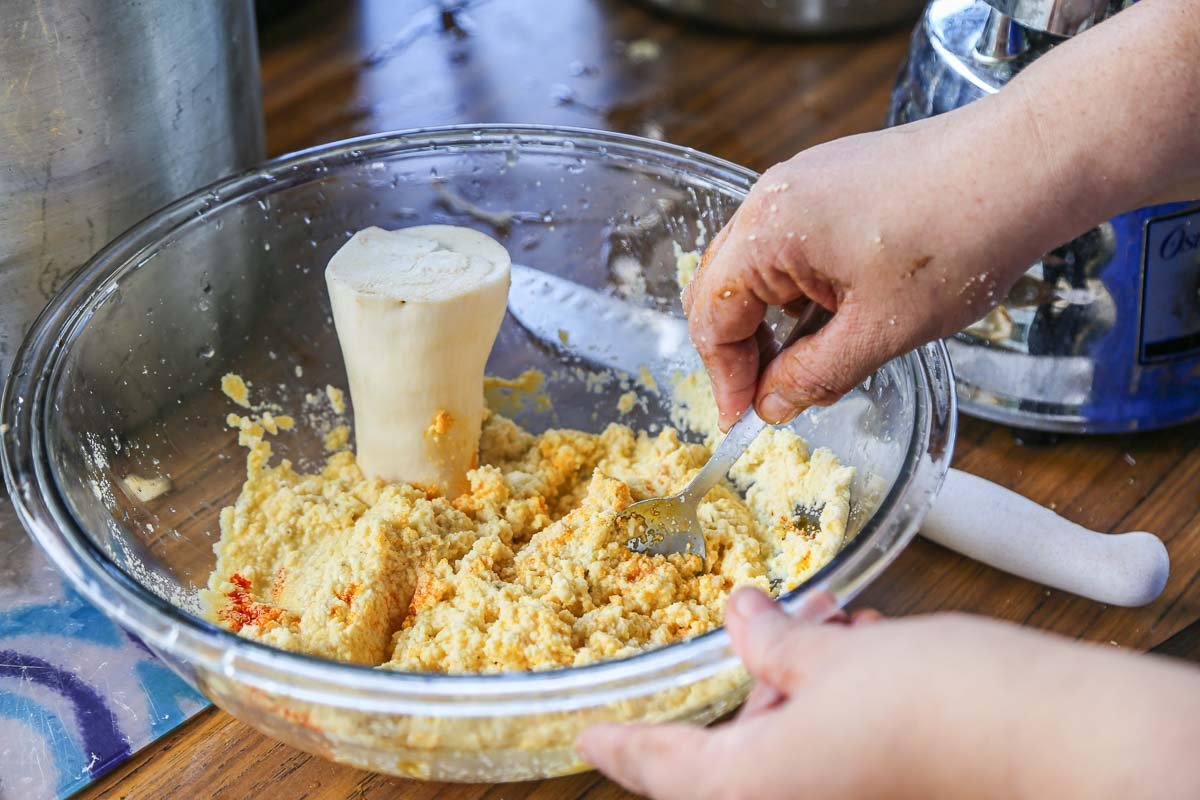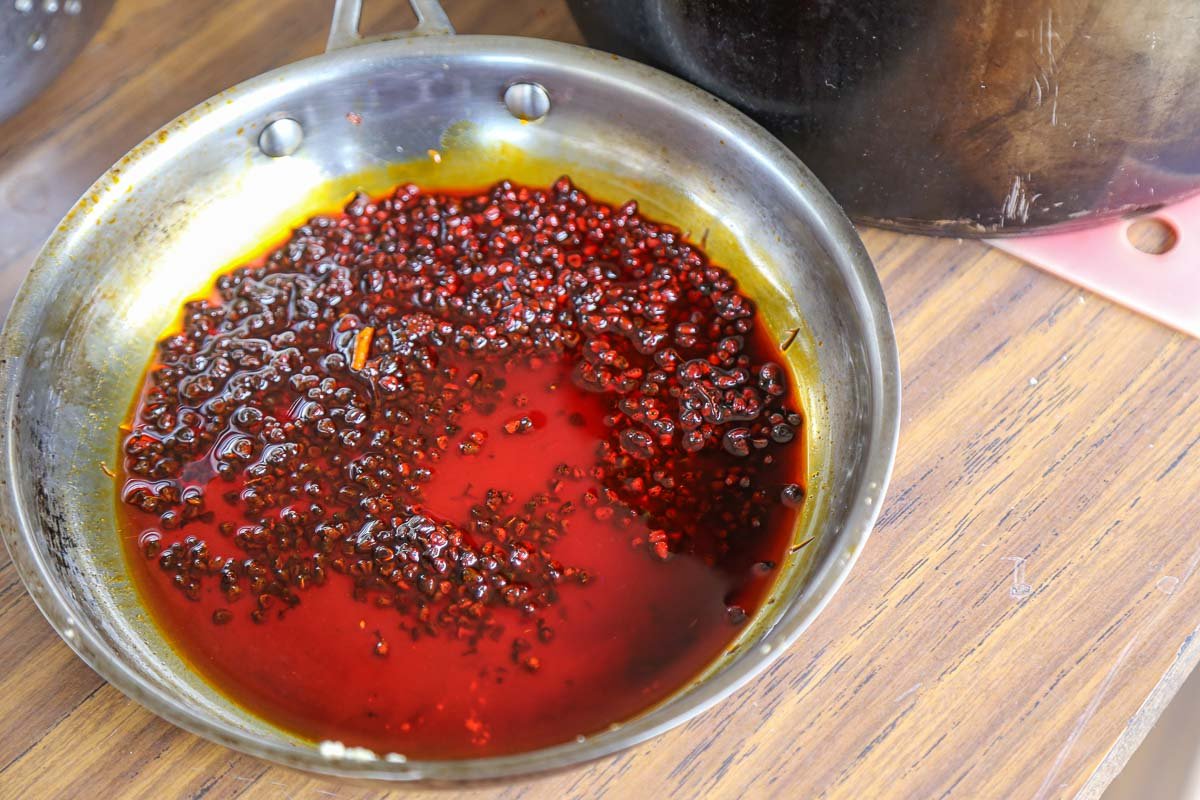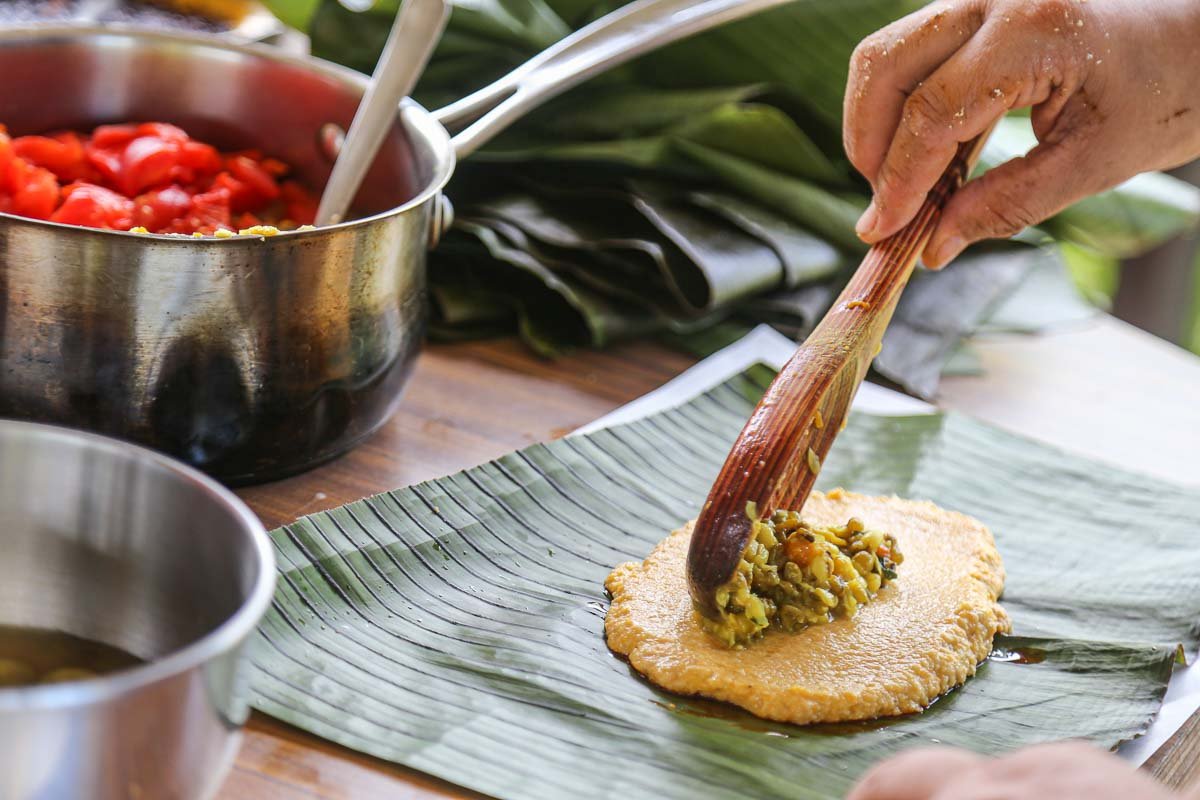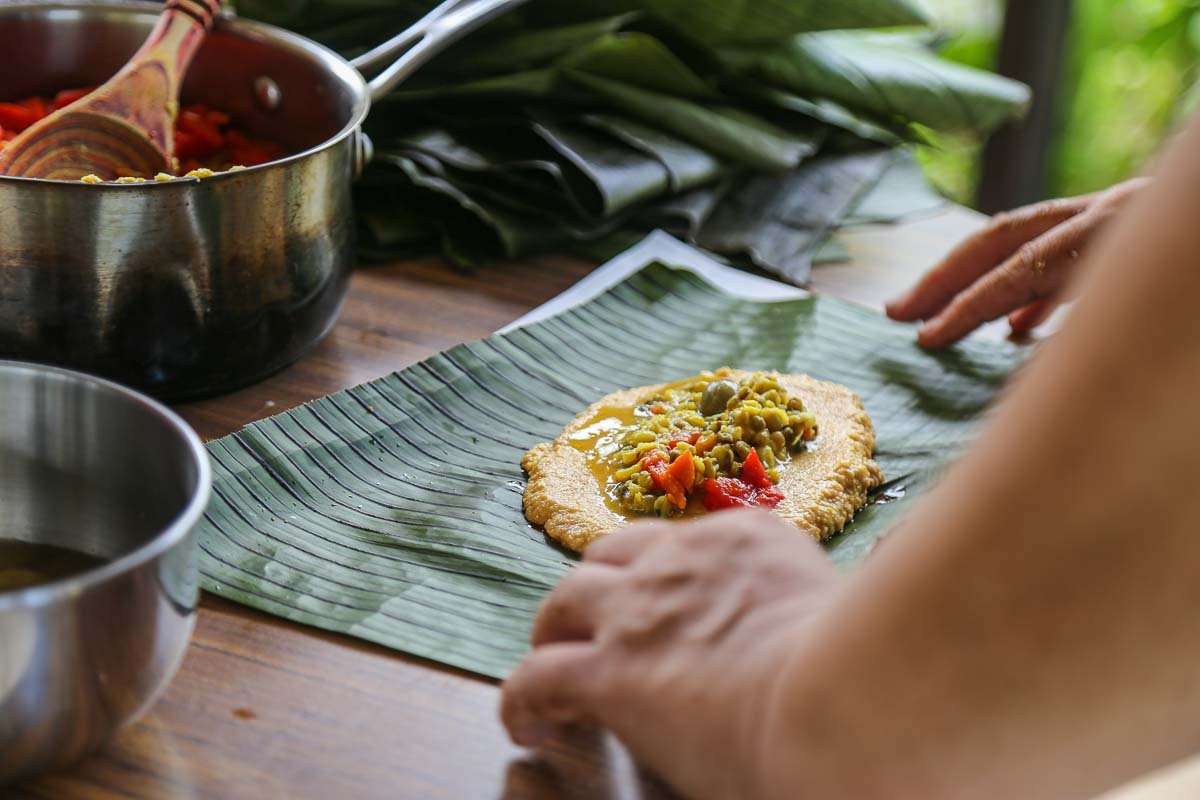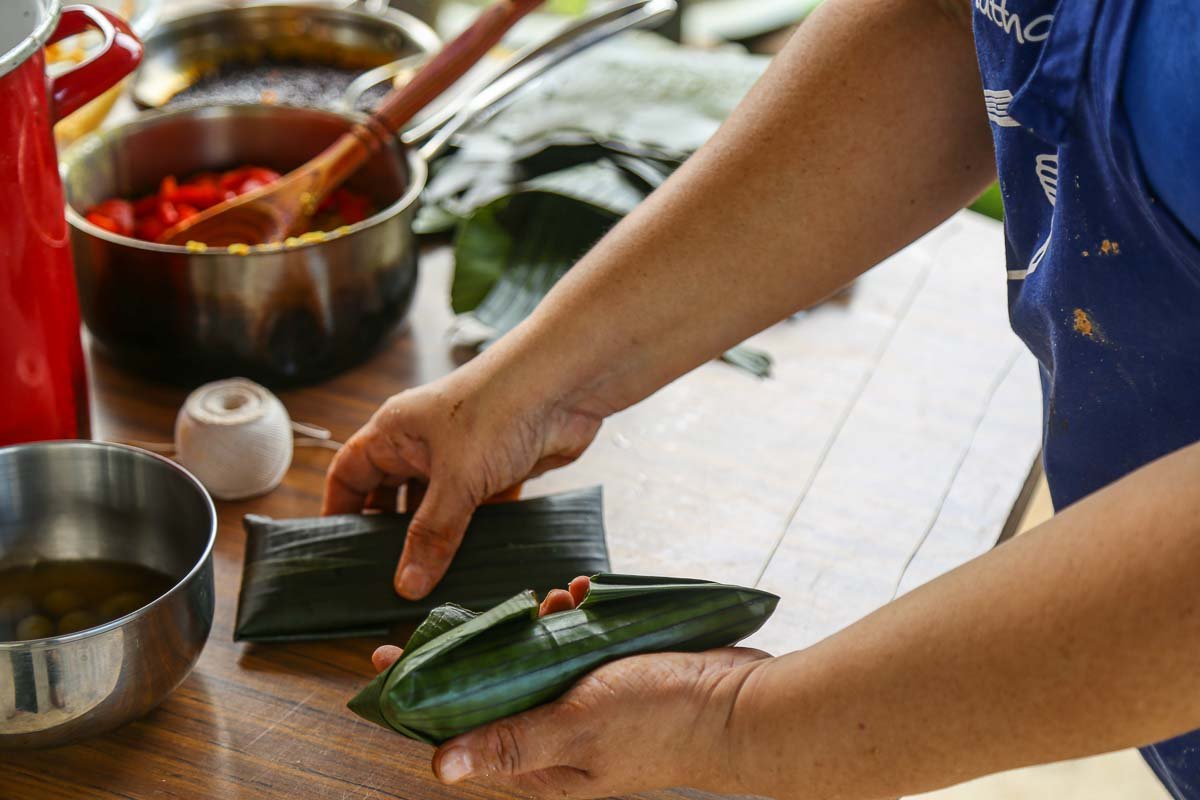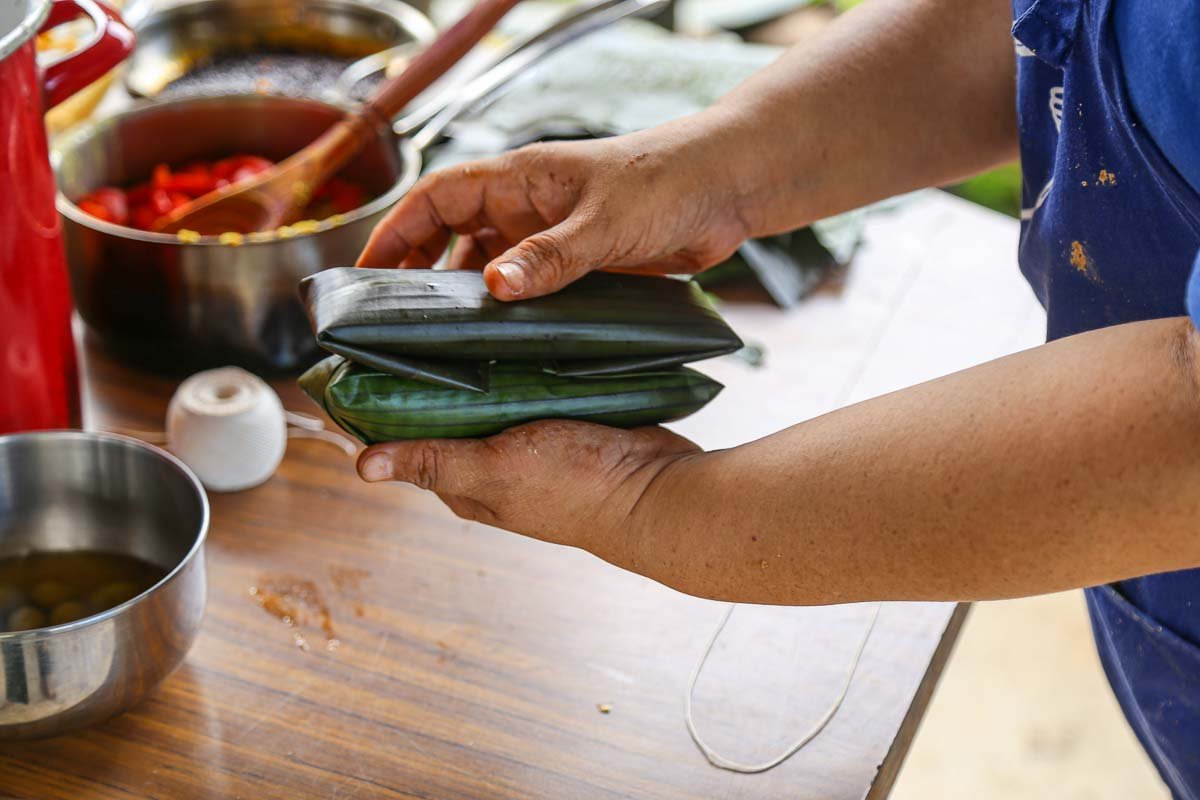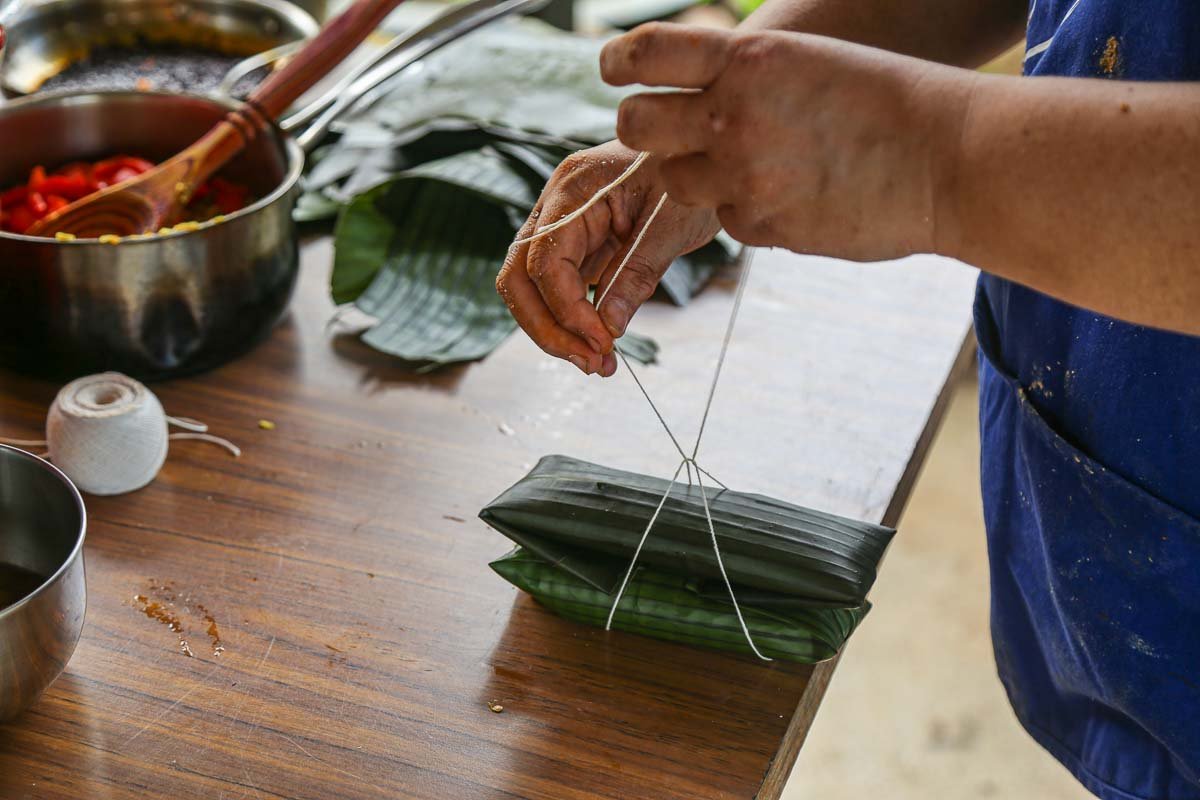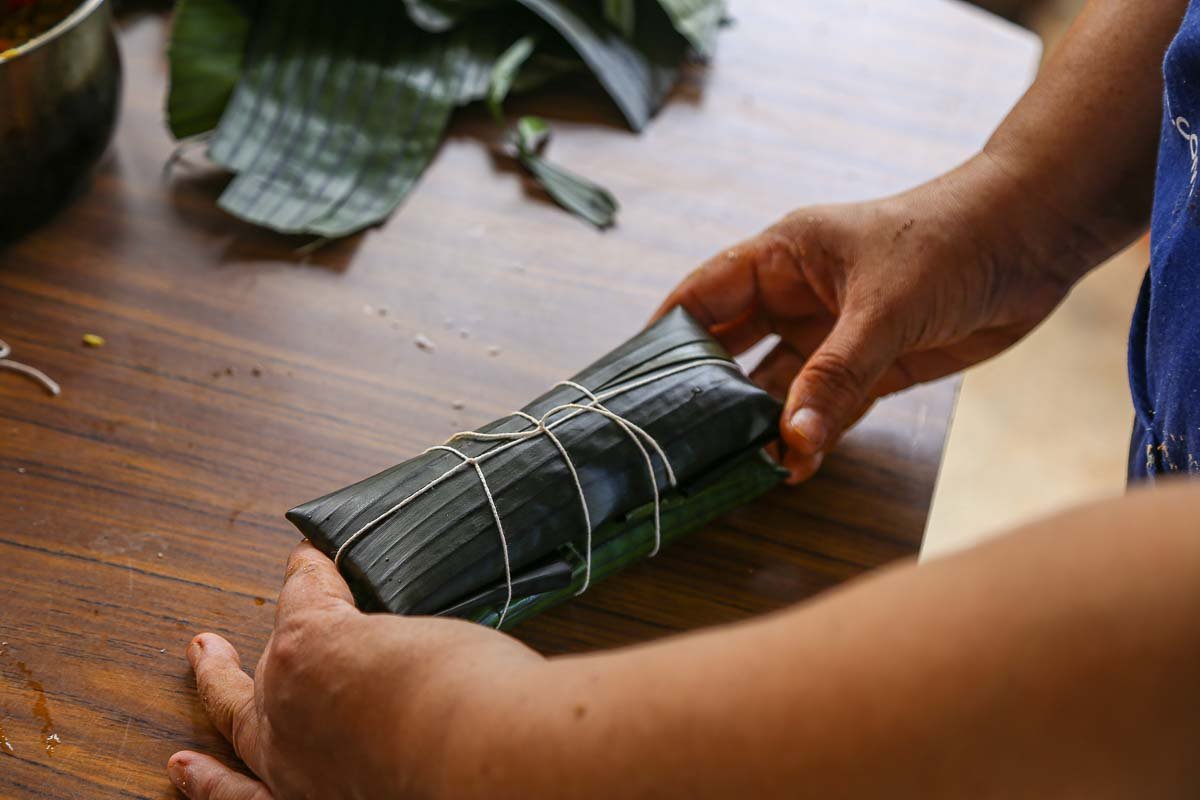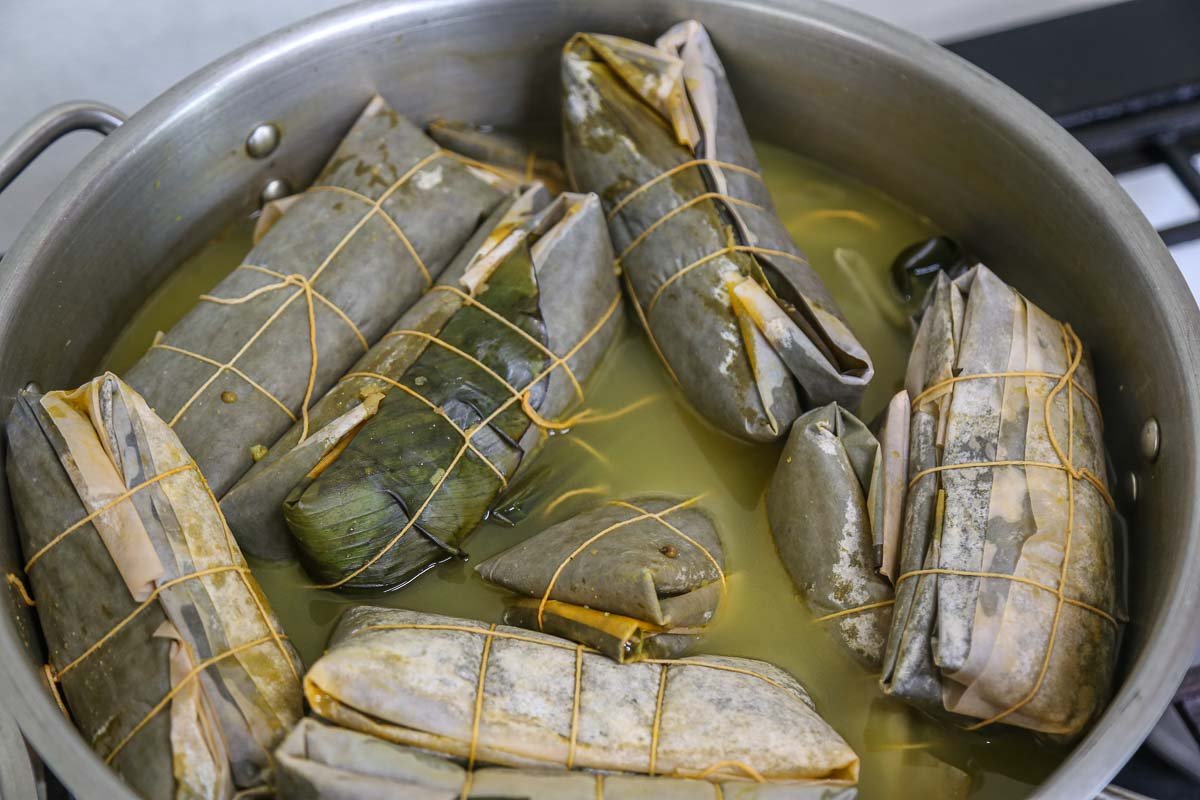Puerto Rican ‘Pasteles’
Mónica Tollinchi demonstrating how to wrap the pasteles.
Thinking about pasteles in Puerto Rico gives us a festive and cheerful feeling. This is because this traditional recipe has always represented family, community togetherness, and celebration! Here we offer you a vegetarian version of this delicious recipe, with instructions for the guineo dough and cassava dough, prepared by Mónica Tollinchi in collaboration with Plenitud PR. Learn more about Mónica here.
iBuen provecho!
Paula Paoli, Plenitud Co-Founder, and Mónica Tollinchi peeling ‘yuca‘ or cassava for the pasteles.
Ingredients:
For Green Banana Dough:
1 full cluster of green bananas (60-80 bananas)
1 small calabaza squash (for approximately ¼ of the dough); can also use a small butternut squash
For Cassava (Yuca) Dough:
6 cassava roots approximately
Remaining Ingredients:
½ cup vegetable oil or ghee with annatto (achiote) seed (by eye)
1 gallon vegetable stock* more or less
Green olives (optional)
Red pepper strips (optional)
Salt to taste
Bananas leaves—cleaned, wilted and cut to size
Waxpaper (optional)
String/kitchen twine
Stuffing Options:
You can stuff your pasteles with the following options:
Stewed chickpeas
Stewed beans
Stewed lentils
Stewed pigeon peas (gandules)
Tempeh or tofu
Stir-fried vegetables of your choice
We do not recommend texturized soy or soy “meat” because it is a highly processed food.
Homemade Vegetable Stock (Optional):
2 tablespoons oil or ghee
3 medium onions
1 tablespoon ground cumin
1 tablespoon coriander seed, ground
2 bay leaves
4 garlic cloves (optional)
1 tablespoon ginger–minced or grated
1 tablespoon ground turmeric
4 carrots
6 celery stalks
4-6 collard greens or any other greens on hand, roughly chopped
1 bunch each of cilantro and basil (or any other herb of your liking)
2 gallons filtered water
Directions:
To Make Homemade Vegetable Stock:
Sautée first 8 ingredients at low heat for about 15 minutes.
Add vegetables, cover and ‘sweat’ them for about 15-20 minutes on medium heat. Some water can be added to keep them from sticking to the bottom. Add water and salt and bring to a boil.
When it comes to a rapid boil, lower the heat to a simmer and cover. Simmer for about 1 hour—the longer it cooks the better the flavor! Then strain and use for this or any other recipe that calls for vegetable stock.
How to make the dough:
(Green banana dough) Peel bananas and squash and cut into cubes.
(Cassava dough) peel and cube cassava roots.
In a blender, put the banana and squash or cassava with a little of the vegetable stock and blend. Add stock as needed for desired consistency. For a firmer consistency, add less stock; add more for looser texture. To assist with this blending process, a blender tamper can be helpful. If you don’t have one, a peeled, whole green banana can be used instead! Continue blending until a homogeneous consistency is achieved. Do this in batches and set aside the prepared dough in a large bowl or pot.
After all the dough is prepared, add the annatto seed ghee or vegetable oil (regular ghee or oil is fine!).
Green Banana Dough Videos
Cassava (Yuca) Dough Videos
Assembly:
If you use the wrapping paper, put a piece of banana leaf (prepared with heat and cleaned) on the paper. Ensure the paper will cover the entire piece of leaf once wrapped.
Spread about a teaspoon of the oil on the leaf. This will prevent the dough from sticking, and allow it to slide off once it’s cooked.
Pour about ¼ cup of the dough onto the leaf and spread evenly with a large spoon or ladle.
Put desired amount of stuffing onto the center of the dough. Other ingredients such as olives, roasted red peppers, or raisins can be added at this point.
Fold the leaf and paper in half over the dough so that both ends of the paper meet. The idea here is that the stuffing is covered with the dough and that it stays contained inside the wrapper. Fold edges to prevent dough from running out.
To tie pasteles, put two of the wrapped pasteles together with the seam side facing each other and tie with string. (Option: Watch video on how to tie pasteles.)
Bring your vegetable stock or salted water to a boil in a large pot, add the prepared pasteles and boil, covered, for an hour. Check to make sure the dough inside feels firm, then unwrap and serve immediately.
Enjoy!!



